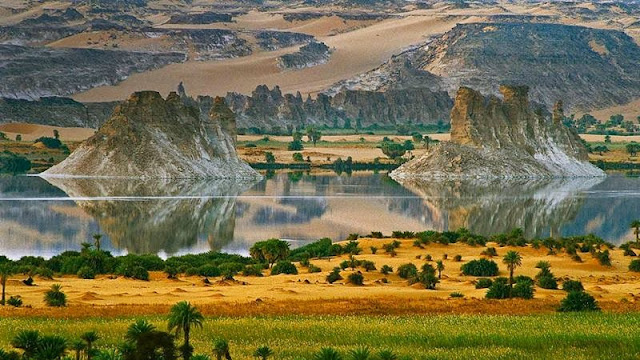Lakes of Ounianga in the Sahara Desert

Lakes of Ounianga are a series of 18 lakes in the Sahara Desert, in North-Eastern Chad, occupying a basin in the mountains of West Tibesti and Ennedi East. The names of the lake groups are derived from the name of a village nearby. It was added as a UNESCO World Heritage site in 2012, the lakes are in a hot and hyper-arid desert that features a rainfall of less than 2 millimeters a year. The lakes are situated in a shallow basin below sandstone cliffs and hills, from where the ancient water flows. Remarkably, this unique hydro-logical system is able to sustain the largest permanent freshwater lakes to be found in such an arid desert environment anywhere in the world. The lakes are remnants of a single large lake, probably tens of kilometers long, that once occupied this remote area approximately 14,800 to 5,500 years ago. As the climate dried out during the subsequent millennia, the lake shrank, and large, wind-driven sand dunes invaded the original depression, dividing it into

